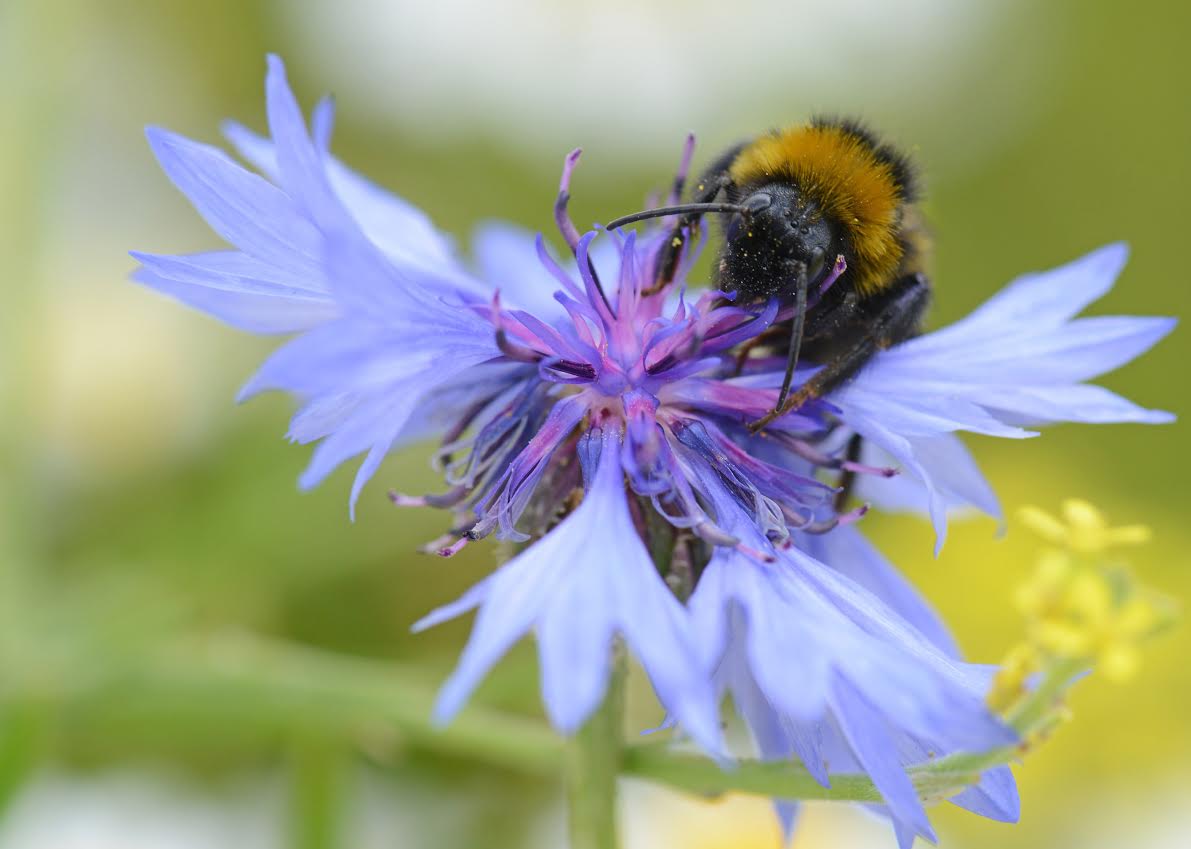
What do cucumbers, mustard, almonds and alfalfa have in common? On the surface very little. But there is one thing they share: they all owe their existence to the service of bees.
For centuries, this tiny striped helper has labored the world’s fields without winning much recognition for its many contributions to food production. Wild bees, in particular, seemed doomed to slog in the shadow of their more popular cousin – the honeybee – whose day job of producing golden nectar has been far more visible and celebrated.
But bees of all stripes are finally getting their moment in the sun with the publication of a paper that quantifies, for the first time, just how much our crop yields depend on the work of pollinators who unknowingly fertilize plants as they move from flower to flower.
And in doing so, they may have a key role to play in improving the production of some 2 billion smallholder farmers worldwide and ensuring the food security and nutrition of the world’s growing population.
The paper, published in the magazine Science, makes the case that ecological intensification – or boosting farm outputs by tapping the power of natural processes -- is one of the sustainable pathways toward greater food supplies.
Food security strategies worldwide could therefore benefit from including pollination as integral component, experts say.
“Our research shows that improving pollinator density and diversity – in other words, making sure that more and more different types of bees and insects are coming to your plants – has direct impact on crop yields,” said Barbara Gemmill-Herren, one of the FAO authors of the report.
“And that’s good for the environment and for food security,” she said, adding that it is beneficial to actively preserve and build habitats in and around farms for bees, birds and insects to live year-round.
How to attract bees
Attracting pollinators to farms is not as easy as planting for the season and waiting for them to arrive.
Maintaining habitat and forage resources all year long is key to wooing pollinators and keeping them on the land for longer periods of time. This can be done by planting different trees and plants that flower at different times in the year, for example.
Maintaining flowering hedge rows around the farm, and mulch on the ground that bees can hide under, are additional recommended tactics to attract them, as is reducing the use of pesticides.
The key to getting the best yields probably lies in a mix of managed pollination services – that is, installing bee hives in plots at flowering time – and wild pollination, experts say.
And the latter will require farmers and policy makers to take a closer look at the ecosystems that surround farms.
“The take away from our study is that bees provide a real service and should be taken into account when we plan food security interventions,” says Azzu. “And the best part is: their service is free.”
